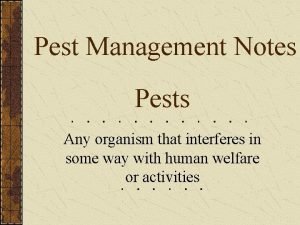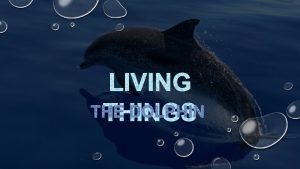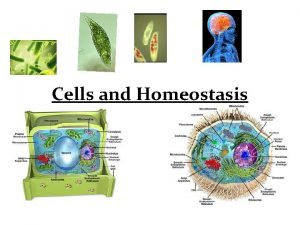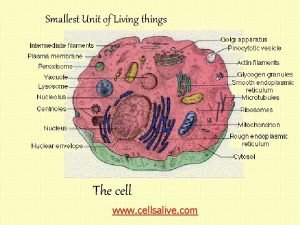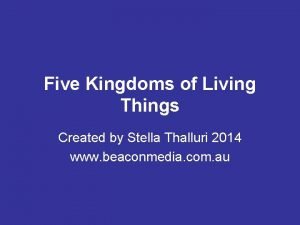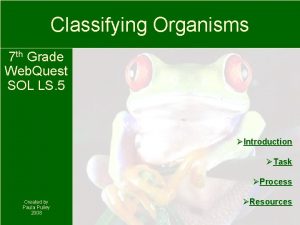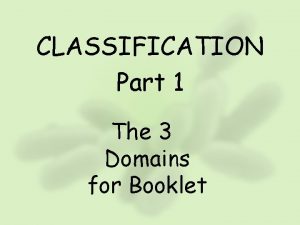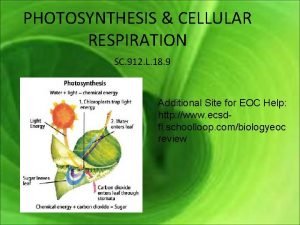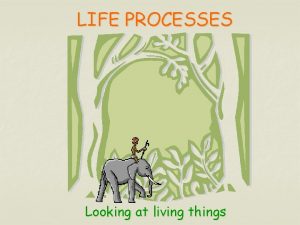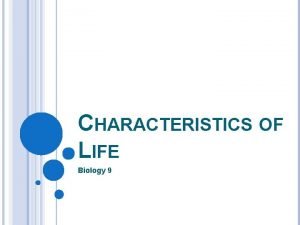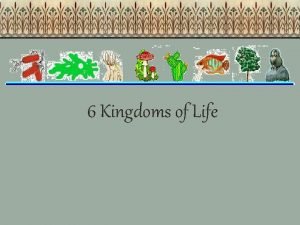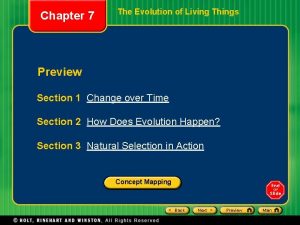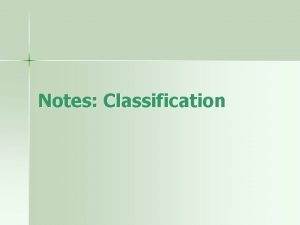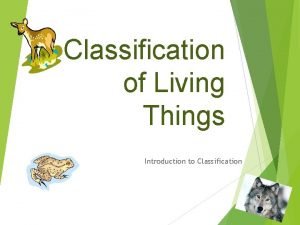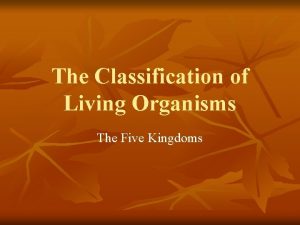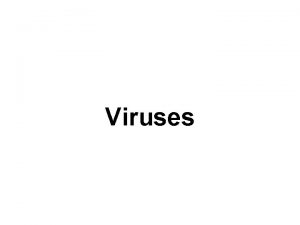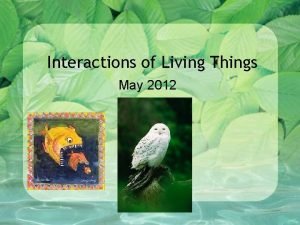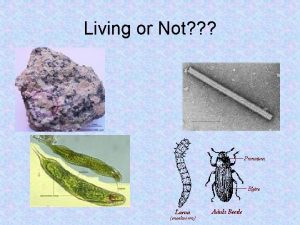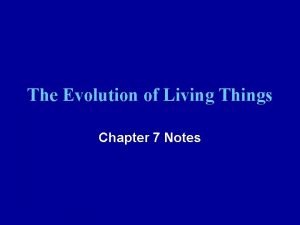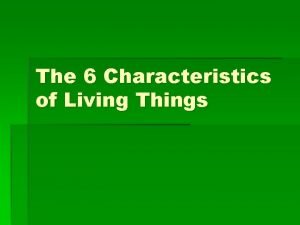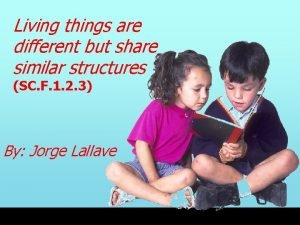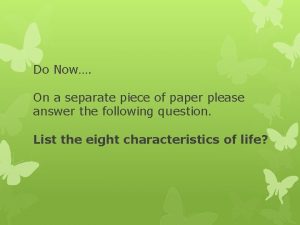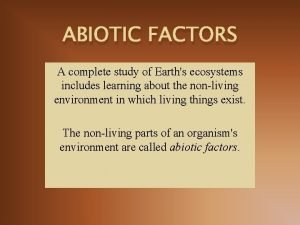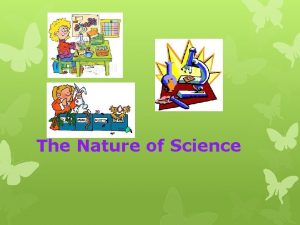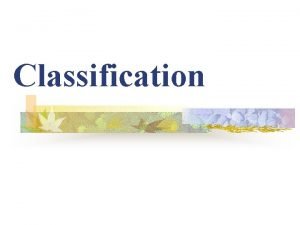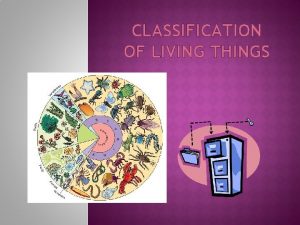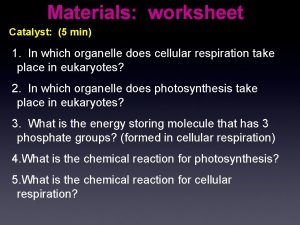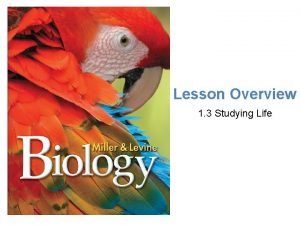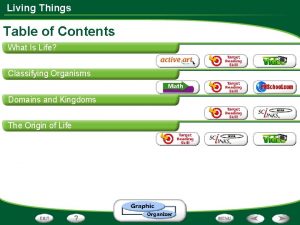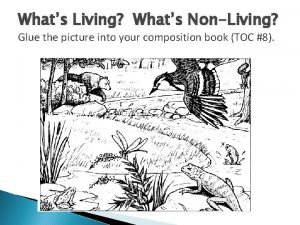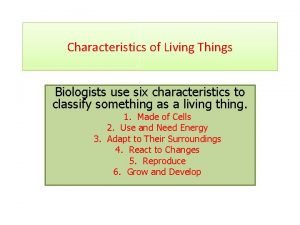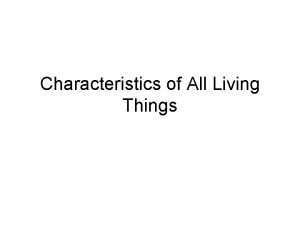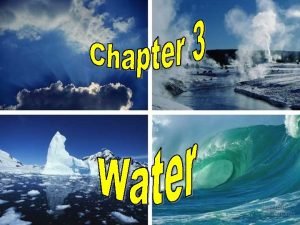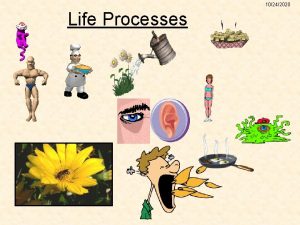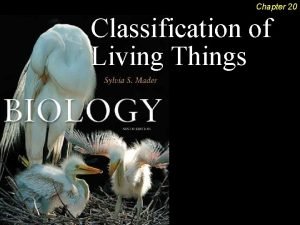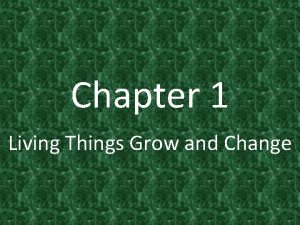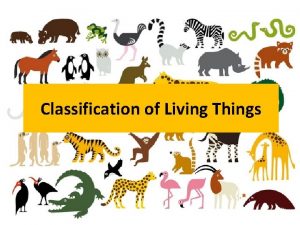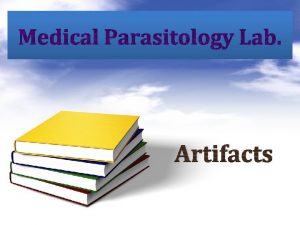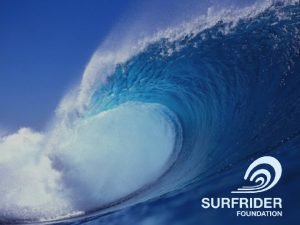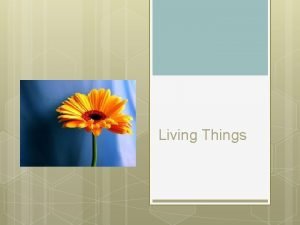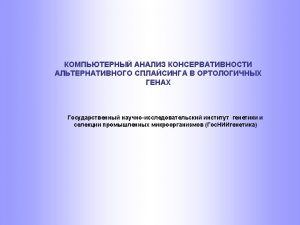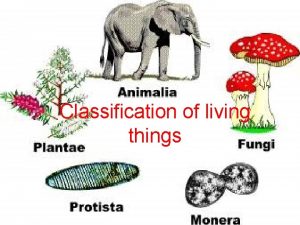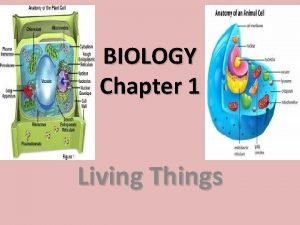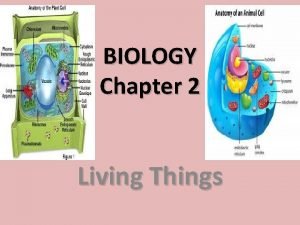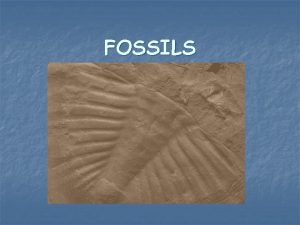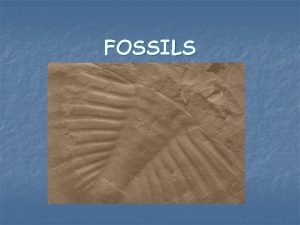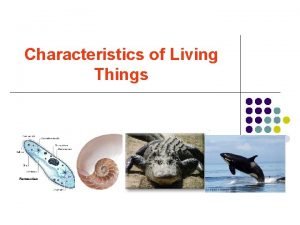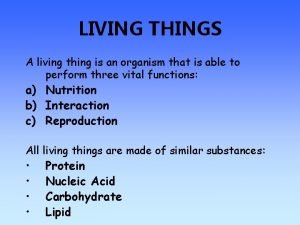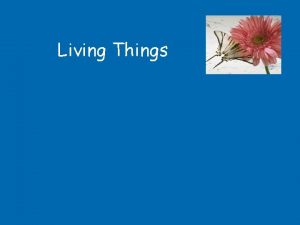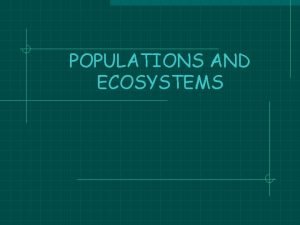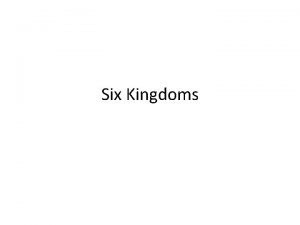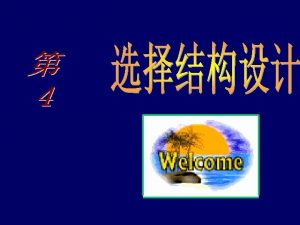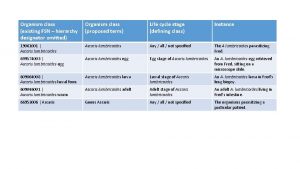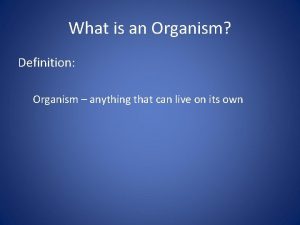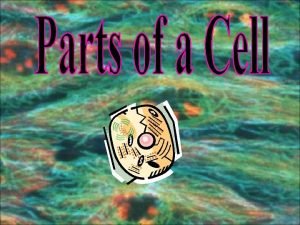Living things Living things any organism or a


























































- Slides: 58

Living things

Living things any organism or a life form that possesses or shows the characteristics of life or being alive.

Animals

Animals a member of the kingdom Animalia, and is characterised by a multicellular body, specialised sense organs, voluntary movement and the ability to acquire and digest food.

Vertebrates

Vertebrates A vertebrate is an animal that has a backbone and a skeleton.

Invertebrates

Invertebrates animals that neither possess nor develop a vertebral column (commonly known as a backbone or spine)

classify/group

classify/group the process of classifying involves grouping objects or events into predetermined groups.

Habitat

Habitat The natural home or environment of an animal, plant, or other organism.

Marine invertebrates

Marine invertebrates are the invertebrates that live in marine habitats.

Classification

Classification The arrangement of animals and plants in taxonomic groups according to their observed similarities.

Common traits

Common traits physical attributes of an organism such as hair color, leaf shape, size, etc. , and behavioral characteristics, such as bird nesting.

Flowering

Flowering plants are a type of vascular plant that produces flowers in order to reproduce. Flowering plants produce seeds within a fruit

Amphibians

Amphibians Any of a group of cold-blooded vertebrate animals that have gills and live in water as larvae but breathe air as adults.

Molluscs

Molluscs A soft animal without a skeleton.

Binomial name

Binomial name The name of a species is made of two parts: one indicating the genus and one indicating the species. Binomial name means "two-part name" or "system of twopart names".

Non-flowering

Non-flowering plants are those that do not ever produce flowers.

Reptiles

Reptiles A cold-blooded animal (as a snake, lizard, turtle, or alligator) that breathes air and usually has the skin covered with scales or bony plates.

Crustaceans

Crustaceans Animals that usually have a hard covering, or exoskeleton, and two pairs of antennas, or feelers.

Worms

Worms Soft, long-bodied invertebrates, or animals without a backbone.

Living organisms

Living organisms Any individual living thing.

Mammals

Mammals A mammal is an animal that breathes air, has a backbone, and grows hair at some point during its life. In addition, all female mammals have glands that can produce milk.

Environments

Environments The environment is everything around us. All our surroundings including the . air, soil, water, plants, and animals

Fossil fuels

Fossil fuels include petroleum (oil), coal, and natural gas. These materials are called fossil fuels because, like fossils, they are the remains of organisms that lived long ago. Organisms are plants, animals, and other living things.

Natural resources

Natural resources Anything that is found in nature that can be used by living things is a natural resource. This includes water, forests, fossil fuels, minerals, plants, animals and even air.

Population

Population A population is the number of living people that live together in the same place. A city's population is the number of people living in that city. These people are called inhabitants or residents. The population includes all individuals that live in that certain area.

Pollution

Pollution When gases, smoke and chemicals are introduced into the environment in large doses that makes it harmful for humans, animals and plants.

Conservation

Conservation The protection of things found in nature. It requires the sensible use of all Earth's natural resources: water, soil, minerals, wildlife, and forests.

Deforestation

Deforestation The clearing, or cutting down, of forests. The word is normally used to describe the actions of humans in removing forests from the planet, rather than destruction caused by natural events.

Natural reserve

Natural reserve A protected area of importance for flora, fauna, or features of geological or other special interest.

Global warming

Global warming The increase in Earth's average temperature over a long period of time.

Sustainability

Sustainability refers to using resources in such a way that they will continue to be available in the future.
 Food chain
Food chain A pest is any organism that
A pest is any organism that The smallest living unit of all living things is
The smallest living unit of all living things is Venn diagram of living and non living things
Venn diagram of living and non living things What are the seven life processes of living things
What are the seven life processes of living things Kingdom of dolphin
Kingdom of dolphin Smallest living unit in the body
Smallest living unit in the body Living organism
Living organism Smallest unit of life
Smallest unit of life Any to any connectivity
Any to any connectivity Informational probes adalah
Informational probes adalah There are some cake
There are some cake Any living thing is called an
Any living thing is called an My favorite things in life don't cost any money
My favorite things in life don't cost any money Living non living dead
Living non living dead Is mold living or nonliving
Is mold living or nonliving Five kingdoms of life
Five kingdoms of life Unscramble classify
Unscramble classify 7 classification levels
7 classification levels What function does atp carry out in living things
What function does atp carry out in living things What does mrs nerg stand for
What does mrs nerg stand for Cho cho chon chonp
Cho cho chon chonp Domain kingdom phylum
Domain kingdom phylum 9 characteristics of life biology
9 characteristics of life biology Kingdoms of life chart
Kingdoms of life chart Chapter 7 the evolution of living things answers
Chapter 7 the evolution of living things answers 3 domain system of classification
3 domain system of classification Classification of living things notes
Classification of living things notes Categories of living things
Categories of living things Are all living things based on the metric system
Are all living things based on the metric system What are the nine characteristics of life
What are the nine characteristics of life Is protoctista autotrophic or heterotrophic
Is protoctista autotrophic or heterotrophic How do viruses differ from living things
How do viruses differ from living things Living things 20
Living things 20 Movement characteristics of living things
Movement characteristics of living things Chapter 7 the evolution of living things answers
Chapter 7 the evolution of living things answers Living things grow
Living things grow 6 characteristics of living things
6 characteristics of living things Characteristics of animals as living things
Characteristics of animals as living things Living things grow images
Living things grow images Non living things outside
Non living things outside Living things grow images
Living things grow images Living things meaning
Living things meaning Why do scientists classify
Why do scientists classify A genus is subdivided into smaller groups called
A genus is subdivided into smaller groups called How living things obtain energy worksheet answers
How living things obtain energy worksheet answers Living things reproduce
Living things reproduce Living things table
Living things table Whats non living things
Whats non living things The six characteristics of living things
The six characteristics of living things Living things
Living things Why is water important to living things
Why is water important to living things How do plants move
How do plants move Carolus linnaeus
Carolus linnaeus Changes in living things
Changes in living things Living things
Living things 5 groups of living things
5 groups of living things Microphege
Microphege Throwaway living
Throwaway living

